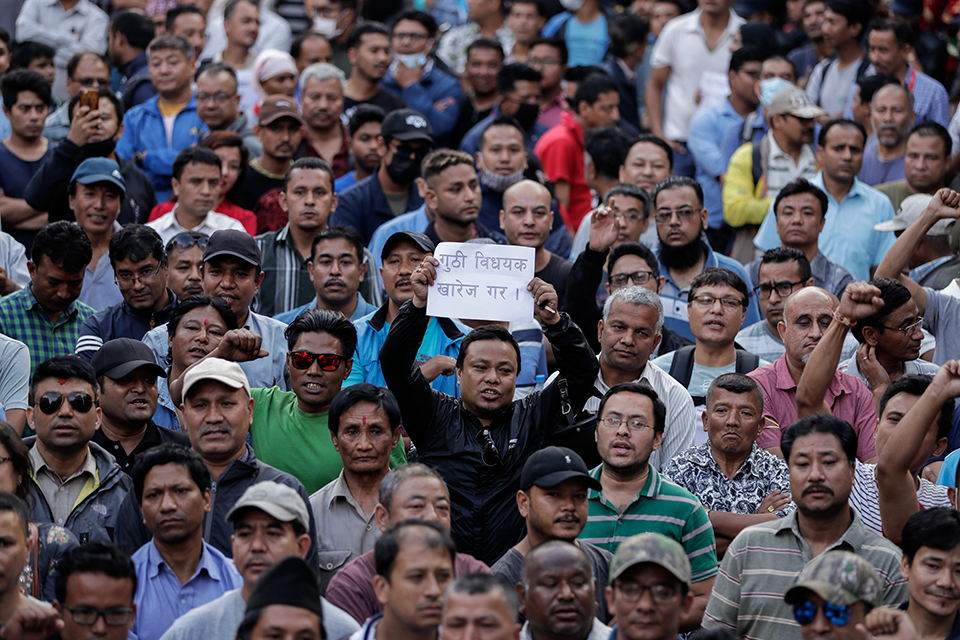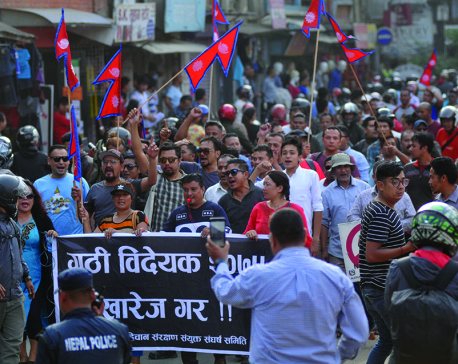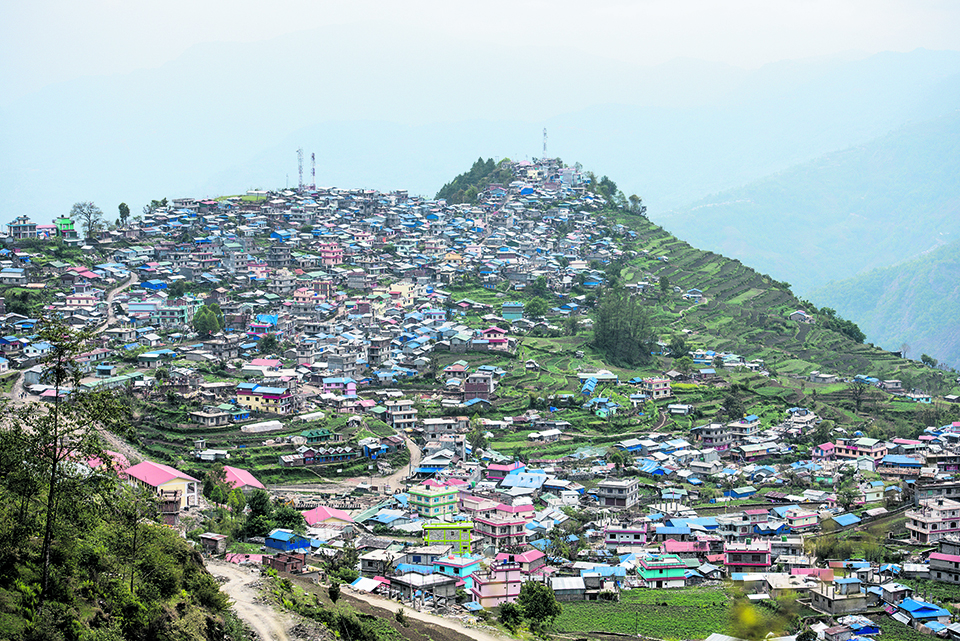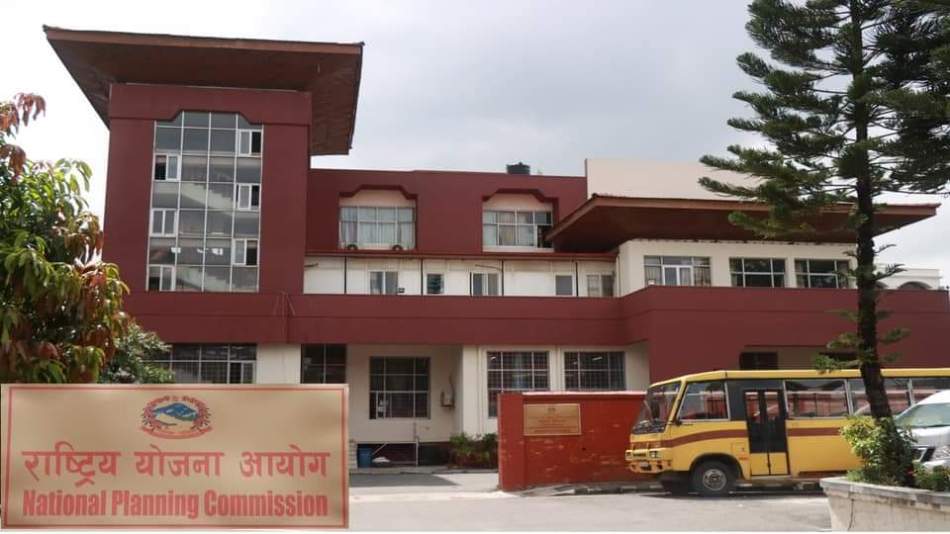
OR


Gérard Toffin
The author is an Emeritus Researcher Professor at the National Centre for Scientific Research, Francenews@myrepublica.com
More from Author
Newars will not easily give up the fight and will clearly protest until the badly drafted Guthi Bill is completely scrapped or totally rewritten in collaboration with Newar stakeholders
For obvious reasons, the Guthi Bill proposed by Ministry of Land Management, Cooperatives and Poverty Alleviation has provoked massive opposition among the Newars of Kathmandu Valley. Thousands of people have taken to the streets and expressed strong objection to this planned confiscation of private property, to the dismissal of actual Newar trustees and to de facto state nationalization of all community trusts and guthi land. Newars rightly consider this proposal to be a frontal attack by government forces on their identity and culture, as well as a technocratic way of running internal social and religious matters. The importance of guthi for Newar culture cannot be overstated. Without these groups and trusts, a number of festivals, rituals and dance could no longer be performed. Interestingly, some members of other Nepali ethnic groups have demonstrated alongside the Newars because the Bill can be more broadly viewed as an anti-indigenous autocratic act. Newars from the diaspora (especially in the UK and USA) have also joined the protest through their communal organizations. This guthi andolan, one of the largest anti-government protests since the 2006 People’s Movement and the establishment of a Republic in Nepal, calls for some explanation and comments, all of which are of importance for the future of a democratic and federalist Nepal.
Guthi for Newars
As I explained in my 2005 Mahesh Chandra Regmi Lecture (Social Science Baha, Kathmandu), guthi designates two different things and corresponds to two different realities that have to be distinguished for the clarity of the debate. The first one, which is specific to Newars, is a basic feature of their socio-religious organization. It refers to social entities anchored more often than not in kinship and territoriality. The first Newar village in which I lived many years ago in Lalitpur district was divided among five guthis, corresponding to five exogamous lineages intermarrying within the boundaries of the village. Throughout the Kathmandu Valley, guthi also refers to death groups whose members have the duty of expressing concern to bereaved families and of performing funeral rituals. Sometimes, all Maharjan villagers of the same locality belong to just one of such brotherhood. In addition, guthis are used to worship lineage deities (digudyah)—a crucial institution throughout Nepal. In all that senses guthis are organized within the boundaries of caste. These groups are so intimately linked to religion and society that to be expelled from one of them for some reason or other (misalliance for instance) is synonymous with social death, stigmatization of the individual and their family. These communal groups have no land and their expenses are covered by guthiyar members through individual obligatory contributions and donations. These guthis are therefore far from a simple economic cooperative. They are at the very heart of Newar society.
The second meaning is associated with religious endowments and land dedicated to religious purposes, many of which is still private. These trust groups serve to maintain temples, perform rituals to deities and fund religious dances and festivals. In this second sense, they are broadly multi-caste and sometimes include Buddhist and Hindu Newars within the same association. These trusts extend beyond the Kathmandu Valley and exist in other parts of Nepal. Yet, for historic reasons, they have so far mainly been found among the Newars of the Kathmandu Valley. As my current work among trustees of several Tantric temples of Kathmandu has clearly proved, these guthis are based on the same social rules and rituals as the first ones.
For Newars, these two meanings are closely connected. Both categories of guthi have equally sustained Newar cultural heritage over the centuries. Producing Malla artistic masterpieces, for instance, would have been difficult without them. Both types of guthi are therefore the nerve centre of Newar society and religion. A bill aimed at putting an end to these local forms of organization can only provoke a strong emotional reaction.
It is worth recalling that in the course of history the Ranas seized a number of plots of guthi land formerly owned by Newars. Later, as a perverse effect of the Land Reform (1963-64), tenants appropriated some of these properties and registered them in their own name. These successive alienations and privatizations have considerably weakened the economic situation of temple trusts. Today, these associations face difficulties in performing their functions in the same way as their ancestors did. The registered Bill needs to be seen in the light of these historical facts. It also has to be viewed in the light of the annexation of the Kathmandu Valley at the end of the eighteenth century and the subsequent marginalization of the Newars, who were gradually dispossessed of their territory and considered a submissive ethnic minority. These elements from the past foster Newar ethnicity and nourish suspicion toward government acts concerning them and which are prepared by non-Newars.
Changing structures
Obviously, the structure of guthi socio-religious organizations is very dissimilar from one caste to another. It is still very strong and cohesive among all Newars, especially Shakyas, Vajracharyas as well as among Maharjans and other agricultural (or farmer) castes, but much less so among Hindu Shresthas. Guthis themselves have also changed over the years and have become more fragile. Many Newars complain about the gradual decline and the decay of these institutions, and about ancient customs dying out because of this. Today, optional forms of affiliation are preferred to former compulsory forms of membership. They are more in phase with modern concerns about individual freedom. Besides, guthis, with their seniority-based structure, are not a model of democracy. The young generation has started to create new groups of the samiti type—more egalitarian in their power management—alongside ancient guthi. The modernization of the country and the introduction of new ideas are therefore a clear threat to these traditional old local male-dominated groups. But guthis are not a relic of the past. They are still the preferred way of gathering together and an inseparable element of Newar identity.
Similarly, Newars know very well that Guthi Samsthan (set up in 1920 by Chandra Shamsher) and the management of religious endowments need to be reformed. Trustees, guthiyar, have been complaining for decades about this corporation. Each year, the trustees have more difficulties to secure revenues from guthi land to finance costly religious performances. Reform is needed, greater financial transparency is a must, and the protection of this land has to be enforced. Newars are also very well aware of the exorbitant price of land in the Kathmandu Valley (they themselves have already sold part of their properties to non-Newars) and are rightly suspicious of private “land mafias”. These potential threats are not a mere product of their imagination but need to be eliminated with the agreement of Newar trustees.
Heed Newars
It is difficult to foresee whether this government blunder will create a lasting divide between the Newar community and the ruling communist party. A number of Newars have supported the communist movement from the very beginning. These activists were not only backing social equality, they fought at the same time to assert their own identity and to oppose the Ranas’ anti-Newar policy. I have always been struck by the remarkable flexibility of my Maharjan friends in combining the deity Bumgadyah (Karunamaya-Matsyendranath) on the one hand and the Marx, Lenin, Stalin triumvirate on the other. Indeed, communism is not known worldwide to support ethnic minority empowerment and religious freedom or the defense of religious faiths. Can this be any different in Nepal?
Newars have been at the forefront of the anti-Shah movement and the establishment of a republic in Nepal. They have interacted with other castes and ethnic groups in this regard. A number of the Parbatiya elite, originally from the hills, have even married Newar women. The present inappropriate intervention of state authorities into their indigenous affairs and cultural heritage is clearly seen by Newars as a betrayal by today’s politicians. So far, the opposition movement has been remarkably peaceful and somewhat resembles a traditional folkloric protest march. But Newars will not easily give up the fight and will clearly protest till the badly drafted bill is completely scrapped or totally rewritten in collaboration with Newar stakeholders.
The author is an Emeritus Researcher Professor at the National Centre for Scientific Research, France
You May Like This

Let the government govern
Opposition to the Guthi Bill challenged the legitimacy of the government but could it be a watershed moment that breaks... Read More...

Amazon confirms two employees in Italy have contracted coronavirus
WASHINGTON, March 2: Amazon.com Inc said late on Sunday that two employees in Milan, Italy, have contracted the coronavirus and... Read More...

Tap the opportunities
Low level of economic integration combined with untenable trade deficit is making Nepal vulnerable to external shocks ... Read More...





Just In
- Gold price rises by Rs 500 per tola
- Emir of Qatar returns home after wrapping up state visit to Nepal
- Senate passes bill forcing TikTok’s parent company to sell or face ban, sends to Biden for signature
- PM Dahal hosts luncheon in honor of Qatari Emir
- Tata Sumo accident in Kavre leaves 10 injured, three in critical condition
- West Indies ‘A’ cricket team arrives in Nepal
- Barpark commemorates 2015's Gorkha Earthquake
- National Development Council meeting on Thursday to finalize 16th Plan



_20240423174443.jpg)










Leave A Comment